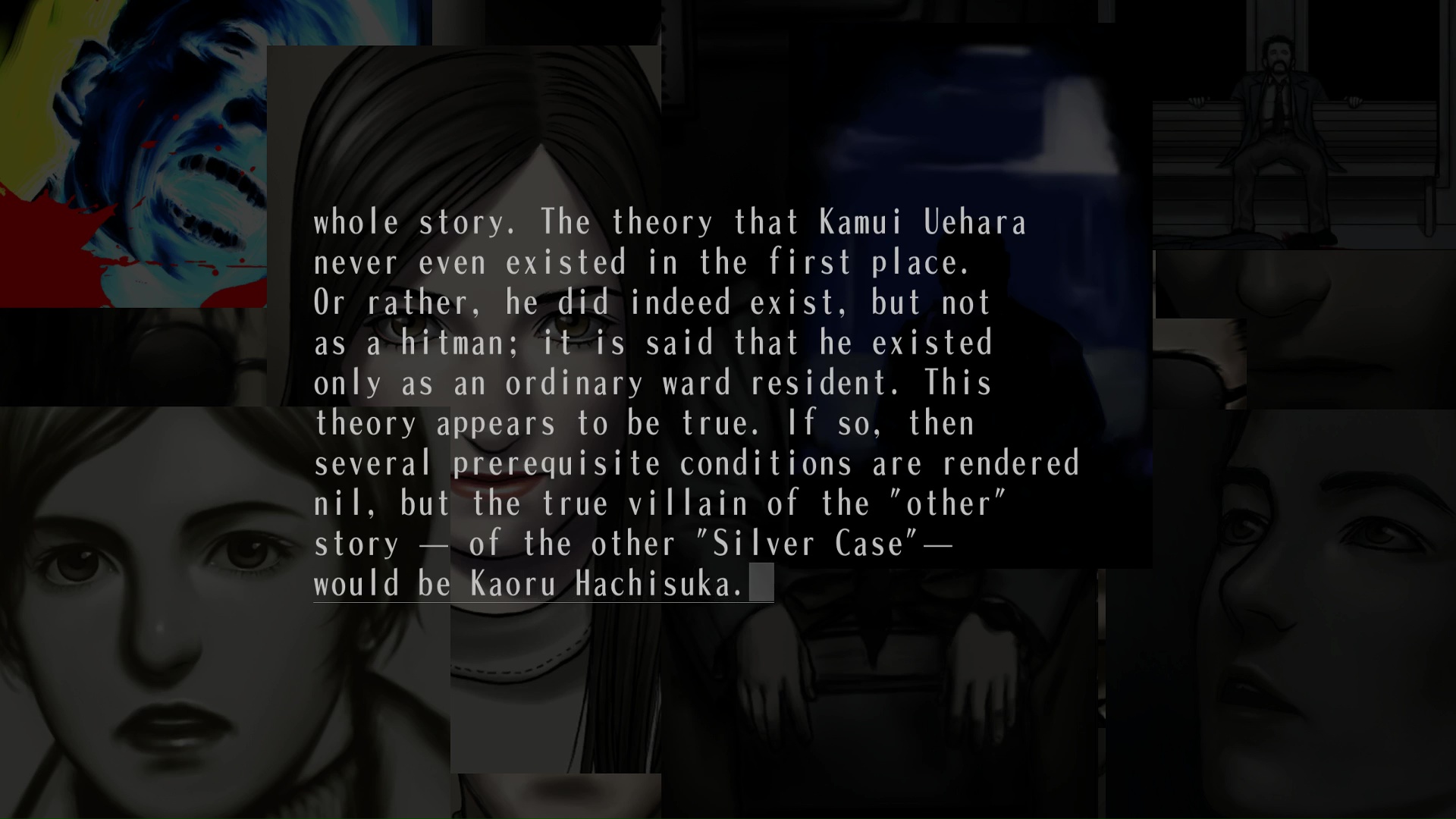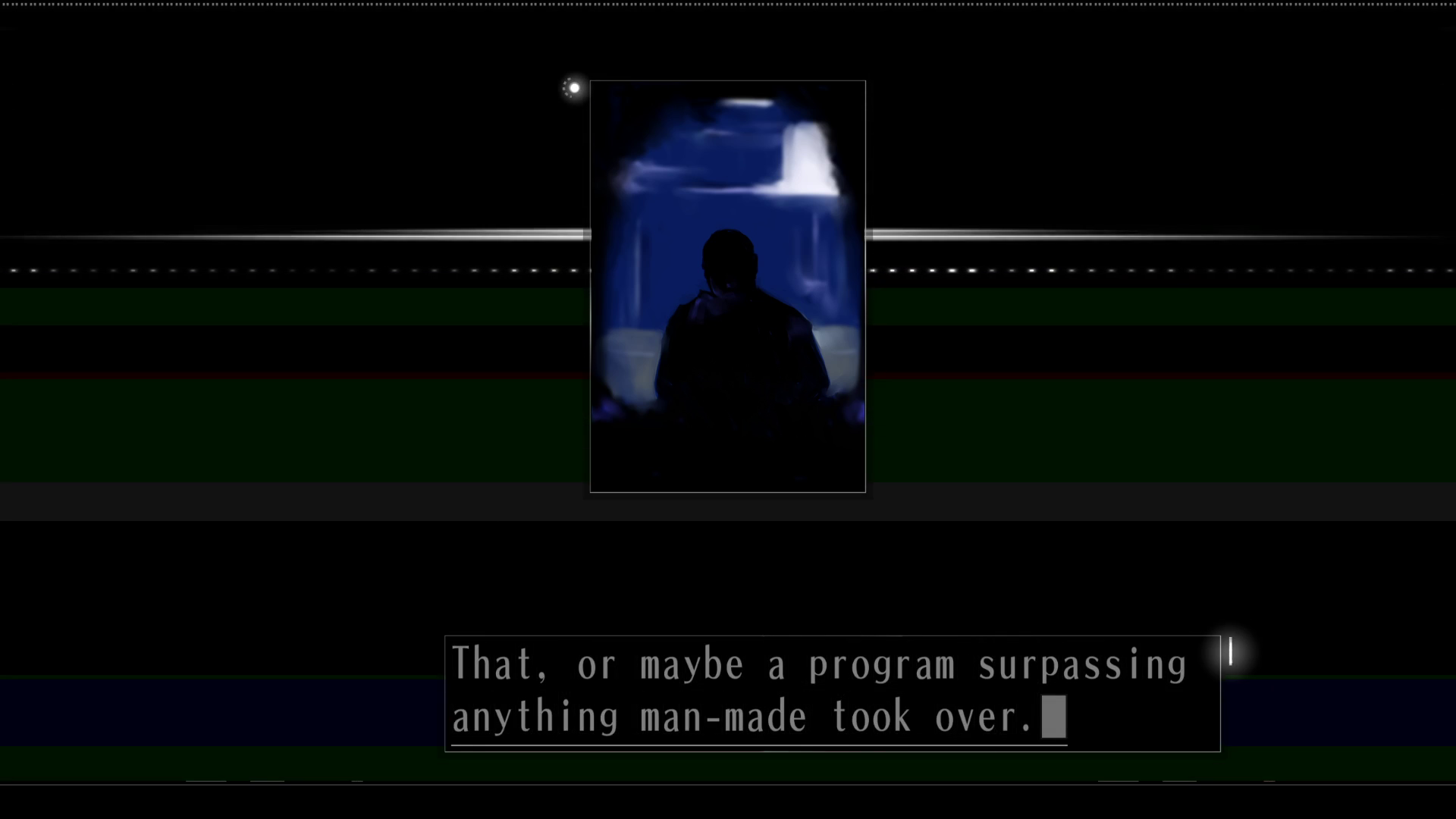For Sakura, the grizzly details of what happened to her and the others are not the worst part, nor is the trauma or the death and pain the Shelter Kids Policy causes Minato, Chizuru, and other characters. Rather, the deception is the worst part: “It’s a tragedy. To control life like that, making Kamui believe he has something to live for, when actually, there’s nothing.” In this case, Kamui refers not to any specific individual but collectively to all Shelter Kids. The Format Kamui personality replaces the spirit that would pursue the light of self-actualization. The essential tragedy is that, from childhood, the Shelter Kids do not have a reason to live except to follow the prevailing ideology of power, but, through false consciousness, believe this life in darkness is not just enough but is good. Hence the cheery utopianism of the Kanto culture that leaves its people alienated, miserable, and at the mercy of the police.

The Silver Case implies (at some points) that there is one active Kamui at any one time, and the same for Ayame. In “LifeCut,” after Fujiwara’s death, TRUMP agents await the next Kamui, apparently expecting him to side with them, but it is unclear whether this means that Kamui/Ayame or “criminal power” is a spiritual being transferring to a new Shelter Kid avatar or if someone will simply use their Shelter Kid abilities to take up the mantle of the Kamui ideology in the manner of Furuya and Nakama, though here for real. In Flower, Sun, and Rain, Kusabi Toriko expresses that she believes both Sumio and Sundance Shot are incarnations of Kamui, though to some extent these are the same person. “Danwa” also favors the reading that there can be multiple fourth Kamuis simultaneously: Kusabi Tetsugoro is shocked that Akira, who now just goes by Kamui, is not the person who kills Uminosuke. He then implies that whoever did this must be Kamui. The culprit is probably Tokio, another Shelter Kid who rejects death-filing: when Uminosuke urges him to kill Akira to awaken his Format Kamui programming, Tokio refuses to adhere to these oppressive values and kills the old man instead.
This last point may require justification. At the close of “Danwa,” someone has killed the imposter Kaoru, i.e. Uminosuke. The 25th Ward confirms that the shadowy false Inohana whom Tokio meets in “HIKARI” is Uminosuke: when Meru’s memo in “UTSUTSU” mentions Hachisuka Kaoru of the 24th Ward, the same shadowy figure appears in the on-screen collage, as can be seen below.


This means Tokio is the last person to see the old man. In The Silver Case, Uminosuke has two silver eyes. In the sequels, Tokio has a silver eye, which he lacks in The Silver Case. In “YAMI,” Tokio informs Catherine that he stole this eye from his father. He is referring to Uminosuke, whom Tokio believes is Kaoru, not realizing this man is his biological grandfather. This confirms that Tokio killed the old man, probably shortly before “HIKARI,” in which Uminosuke’s scenes are flashbacks. This also means that Tokio symbolically ascends into light by literally killing the source of the trauma in his life. The date that Tokio meets Uminosuke is unclear, as is the date on which Kusabi learns the mayor is dead. Tokio likely kills Uminosuke on 28 December, before visiting Jack Hammer, while “Danwa” might occur that day or on 29 December.
***
Aside from the metaphorical sense of savior Kamui, the literal supernatural meaning also seems to be true in the universe of the story. When he meets Akira in the Triangle Towers, Kusabi understands the emergence of Kamui to mean the person absorbs a huge amount of information, suggesting a less magical sense. But Uminosuke floats the possibility: “Kamui’s ferality grew fangs. That, or maybe a program surpassing anything man-made took over.” Ghosts and other spiritual entities literally exist in this setting. Tokio absorbs remnant psyches, but these do not in some way death-file him or totally take control of his body.
